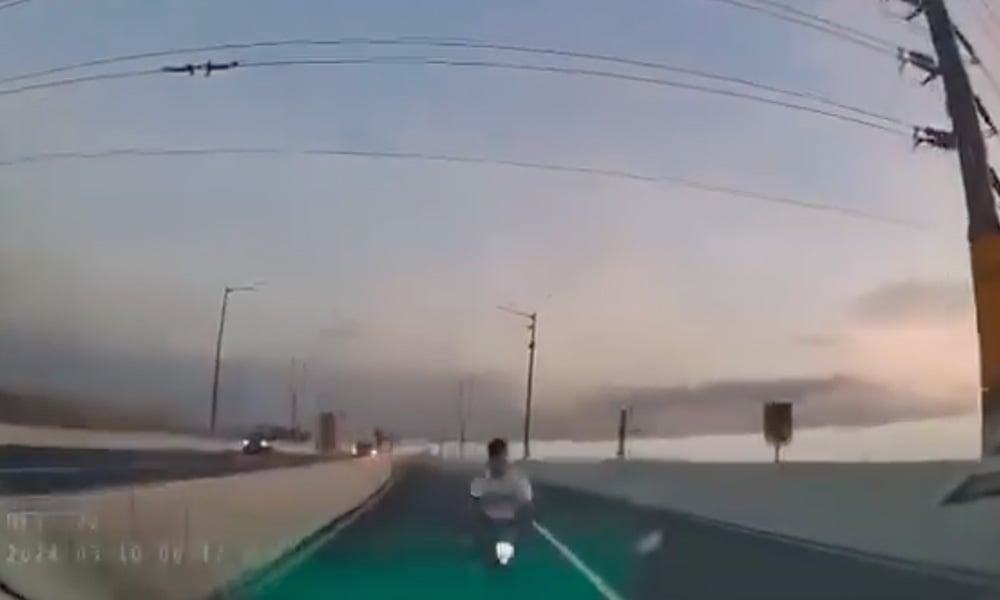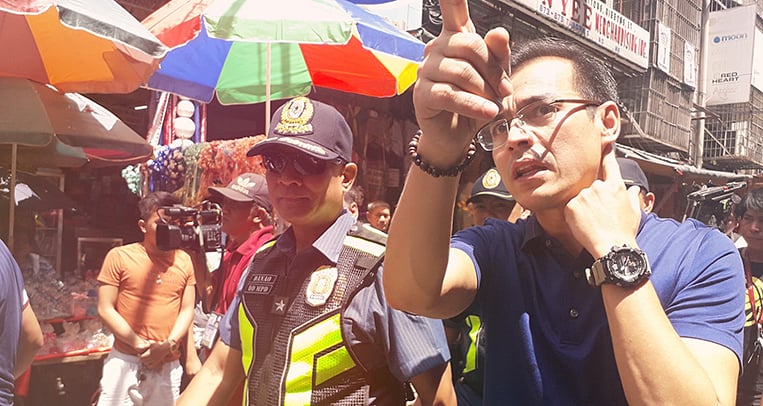
By now, you’ve probably seen that viral video of a crash along Skyway Stage 3. In the video, a sub-400cc underbone went up the Balintawak off-ramp of the SS3’s northbound lane and counterflowed.
The motorcycle rider collided with a Toyota Innova head-on, causing the former to sustain fatal injuries. The motorbike got totaled, while the people carrier was severely damaged.
In a video report by GMA Integrated News, an officer of the Highway Patrol Group said that the HPG had filed a case against the AUV driver (which was eventually dismissed). The complaint: reckless imprudence, resulting in homicide and damage to property.
This case brings to light serious issues about what’s wrong with the traffic laws in our country.


Failure to implement existing traffic laws
This is not the first time that we’ve seen this kind of traffic law infraction. In fact, several reckless individuals have been doing daring stuff, as if they’re ticking boxes out of their bucket list of crazy deeds.
We’ve seen tricycles plying by the North Luzon Expressway. There’s an e-trike that was trying to enter an expressway, but was thankfully flagged down. And then there’s this alleged Philippine Coast Guard staffer trying to enter the expressway with his 150cc bike.
The crux of all this madness is the failure of authorities to implement traffic laws. While there may be a ton of traffic enforcers out there, there aren’t enough of them to monitor every nook and cranny of our road network.
It seems that the motivation of these enforcers is to apprehend as many motorists as possible so they could hit their quotas for better compensation. They are doing this instead of actually guiding motorists for better traffic flow.

The now-suspended No Contact Apprehension Program offered a glimmer of hope. With the help of technology, the initiative significantly increased the local government units’ power to monitor the roads under their jurisdiction.
Sadly, issues about the program remain unresolved in the Supreme Court. And it might take a while before a judgment could be made. This keeps the NCAP from being reinstated.

Rampant corruption
If your idea of corruption on the road is just the act of bribing enforcers, you’re barely scratching the issue’s surface.
There’s the use of fixers to bypass the various measures that properly screen driving license applicants. The same is done to register dilapidated vehicles—or even road-worthy ones, if only to evade the long queues at emission testing centers.
We can go on and discuss every corrupt act in the country when it comes to land transportation, but corruption is far-reaching, embedded deeply into various government agencies. Sadly, no matter how much we want to avoid it, the system somehow forces our hand into it.
We only have two choices: get the process done quickly, or end up grossly inconvenienced.

The expensive and arduous fight for justice
I have been involved in a traffic accident before. And I can attest that some traffic investigators aren’t faithfully fulfilling their duties. Instead of carefully investigating these accidents, many act as mediators or patrons for those with money or influence.


A conversation with a lawyer has opened a can of worms for me about the issue. He shares that many traffic investigators would instead want to have cases filed.
This practice allows them to wash their hands of culpability, instead of conducting serious forensic analyses of pieces of evidence that they should be collecting. This leads to poorly built-up cases, for better or worse.
In some instances, some parties are intimidated or led to sign detention waivers while dealing with the trauma that the accident has caused. These are done without the presence of lawyers to protect the party’s rights.
These force those involved in accidents to enter one-sided agreements with the other party if only to save them from expensive legal fees, loss of productivity and time, and unnecessary stress that litigations come with.

Legal technicalities that condone the kamote mindset
Many investigators seem to prefer filing charges against the less hurt or surviving party in an accident. This coerces said party to instead settle with the seriously injured party—or the family in case of death—to show that the officers are “doing something.”


This practice doesn’t only seem to absolve kamotes from the consequences of their actions (no matter how obvious these violations are), but it also incentivizes reckless driving.
And we’re just looking at the tip of the proverbial iceberg here. There’s so much more to cover about what’s wrong with our roads. However, we believe that there are many ways to help improve our situation now. But the government always chooses to be reactive rather than be proactive.

This leaves us helpless, with no means to correct these conditions. And until things change, we’d most likely see more crazy and gory motoring videos in the future.











Comments